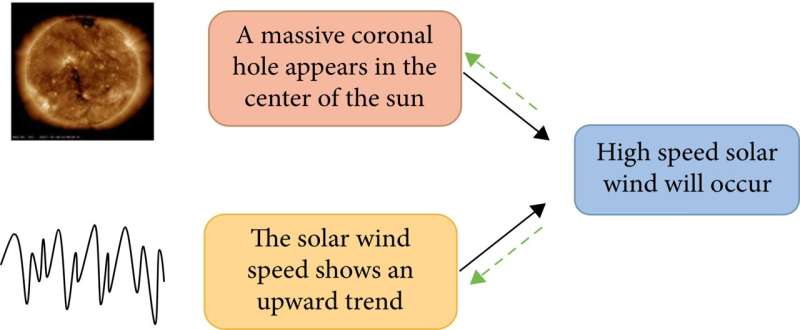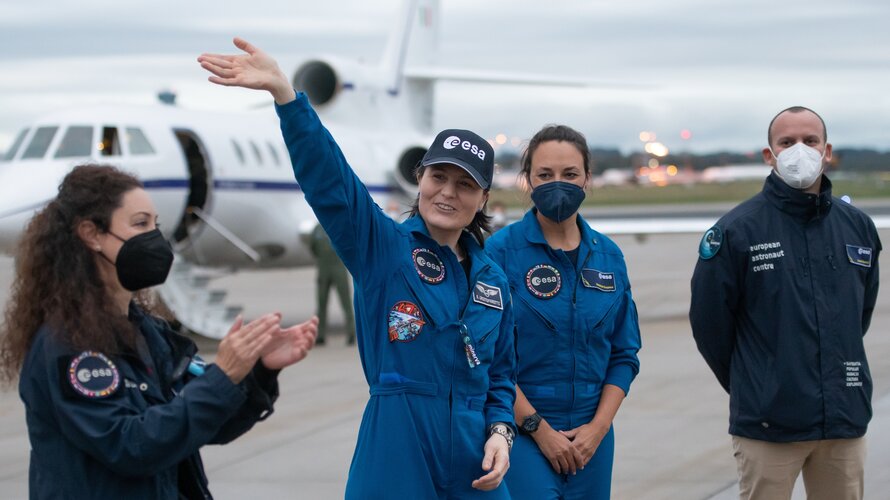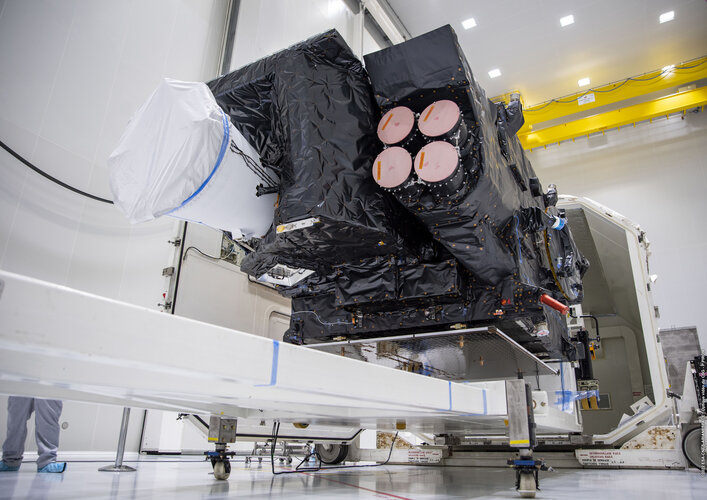
Copernical Team
How scientists predict solar wind speed accurately using multimodality information

As more and more high-tech systems are exposed to the space environment, space weather prediction can provide better protection for these devices. In the solar system, space weather is mainly influenced by solar wind conditions. The solar wind is a stream of supersonic plasma-charged particles which will cause geomagnetic storms, affect short-wave communications, and threaten the safety of electricity and oil infrastructure when passing over the Earth.
Accurate prediction of the solar wind speed will allow people to make adequate preparations to avoid wasting resources. Most existing methods only use single-modality data as input and do not consider the information complementarity between different modalities.
Samantha Cristoforetti’s first news conference after returning to Earth
 Video:
00:53:23
Video:
00:53:23
Watch the replay of Samantha’s first news conference in Europe after almost six months of living and working on board the International Space Station. Samantha talks from ESA’s European Astronaut Centre in Cologne, Germany. Her Minerva mission came to an end last week and she and her colleagues from Crew-4 splashed down off the coast of Florida on 14 October at 22:55 CEST.
Europe’s all-new weather satellite arrives at launch site

After a two-week voyage across the Atlantic Ocean, the ship transporting the first Meteosat Third Generation satellite docked at Pariacabo in French Guiana and the precious cargo unloaded. Now safe and sound in one of the spaceport’s cleanrooms, satellite engineers will ready it for liftoff on an Ariane 5 rocket in December. Once in geostationary orbit, this new satellite, which carries two new extremely sensitive instruments, promises to further bolster Europe's leadership in weather forecasting.
China launches new environmental satellite
 China launched a new satellite for disaster reduction, emergency management, and environment monitoring from the Taiyuan Satellite Launch Center in northern Shanxi province early Thursday.
A Long March-2C rocket carrying the satellite S-SAR01 lifted off at 6:53 am (Beijing Time).
The satellite has entered the preset orbit. Its primary users will be the Ministry of Emergency Managemen
China launched a new satellite for disaster reduction, emergency management, and environment monitoring from the Taiyuan Satellite Launch Center in northern Shanxi province early Thursday.
A Long March-2C rocket carrying the satellite S-SAR01 lifted off at 6:53 am (Beijing Time).
The satellite has entered the preset orbit. Its primary users will be the Ministry of Emergency Managemen Satellite Vu selected in inaugural Net Zero X cohort
 Satellite Vu, the British Earth Observation company set to become the world's thermometer from space with its planned constellation of high-resolution thermal imaging satellites, has been selected in Tech Nation's inaugural Net Zero X cohort.
The Net Zero X programme focuses on scaling and growth of the later-stage climate technology scaleups within its cohort. The six-month programme, in
Satellite Vu, the British Earth Observation company set to become the world's thermometer from space with its planned constellation of high-resolution thermal imaging satellites, has been selected in Tech Nation's inaugural Net Zero X cohort.
The Net Zero X programme focuses on scaling and growth of the later-stage climate technology scaleups within its cohort. The six-month programme, in How scientist summarized the development of space robotic technologies for on-orbit assembly?
 The construction of large structures is one of the main development trends of the space exploration in the future, such as large space stations, large space solar power stations, and large space telescopes. However, due to their large size, such structures cannot be carried directly into space by rockets or spacecraft. Therefore, these large structures need to be broken down into multiple modula
The construction of large structures is one of the main development trends of the space exploration in the future, such as large space stations, large space solar power stations, and large space telescopes. However, due to their large size, such structures cannot be carried directly into space by rockets or spacecraft. Therefore, these large structures need to be broken down into multiple modula Astronomers are captivated by brightest flash ever seen
 Astronomers have observed the brightest flash of light ever seen, from an event that occurred 2.4 billion light years from Earth and was likely triggered by the formation of a black hole.
The burst of gamma-rays - the most intense form of electromagnetic radiation - was first detected by orbiting telescopes on October 9, and its afterglow is still being watched by scientists across the wor
Astronomers have observed the brightest flash of light ever seen, from an event that occurred 2.4 billion light years from Earth and was likely triggered by the formation of a black hole.
The burst of gamma-rays - the most intense form of electromagnetic radiation - was first detected by orbiting telescopes on October 9, and its afterglow is still being watched by scientists across the wor Revealing the mysteries of the universe under the skin of an atomic nucleus
 Massive neutron stars colliding in space are thought to be able to create precious metals such as gold and platinum. The properties of these stars are still an enigma, but the answer may lie beneath the skin of one of the smallest building blocks on Earth - an atomic nucleus of lead. Getting the nucleus of the atom to reveal the secrets of the strong force that governs the interior of neutron st
Massive neutron stars colliding in space are thought to be able to create precious metals such as gold and platinum. The properties of these stars are still an enigma, but the answer may lie beneath the skin of one of the smallest building blocks on Earth - an atomic nucleus of lead. Getting the nucleus of the atom to reveal the secrets of the strong force that governs the interior of neutron st Webb reveals new surprises on galaxy organic molecules near black holes
 Tiny dust molecules known as polycyclic aromatic hydrocarbons (PAHs) are among the most widespread organic molecules in the universe and important astronomical tools. For instance, they are considered to be fundamental building blocks of prebiotic compounds, which may have played a key role in the origin of life. PAH molecules produce extremely bright emission bands in the infrared region when t
Tiny dust molecules known as polycyclic aromatic hydrocarbons (PAHs) are among the most widespread organic molecules in the universe and important astronomical tools. For instance, they are considered to be fundamental building blocks of prebiotic compounds, which may have played a key role in the origin of life. PAH molecules produce extremely bright emission bands in the infrared region when t Orbex secures 40M pounds in Series C Funding round
 UK-based spaceflight company Orbex has secured 40.4 million pounds for its Series C funding round, led by a new investor, the Scottish National Investment Bank. The new round of funding will allow the company to scale up its resources as it counts down to the first vertical launch from UK soil, as well as unlocking additional funding to support future projects.
Orbex recently revealed its
UK-based spaceflight company Orbex has secured 40.4 million pounds for its Series C funding round, led by a new investor, the Scottish National Investment Bank. The new round of funding will allow the company to scale up its resources as it counts down to the first vertical launch from UK soil, as well as unlocking additional funding to support future projects.
Orbex recently revealed its 